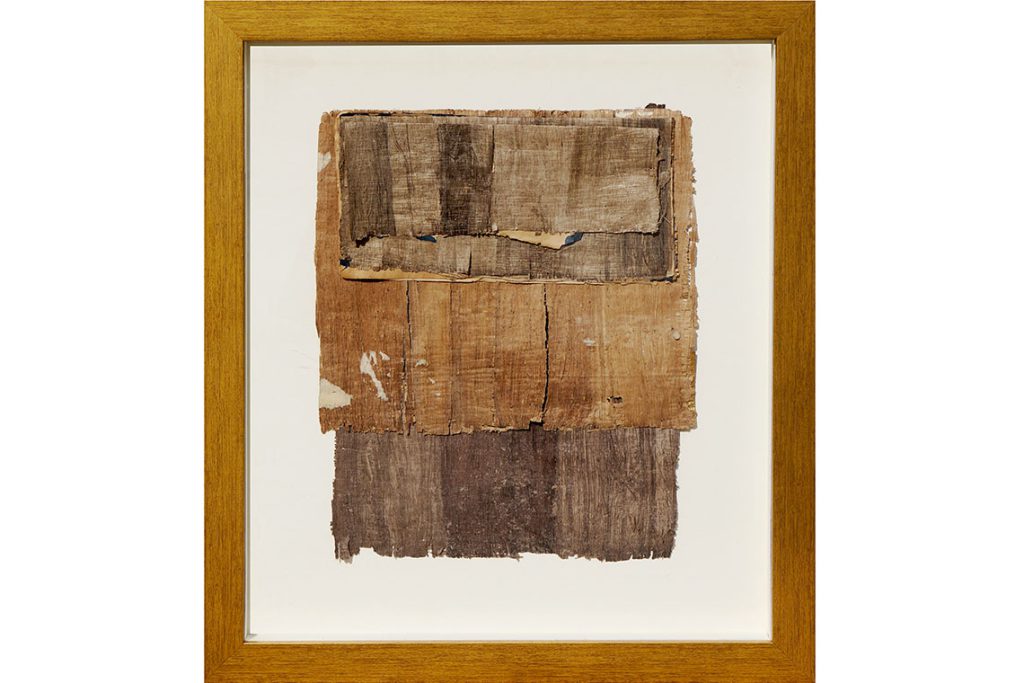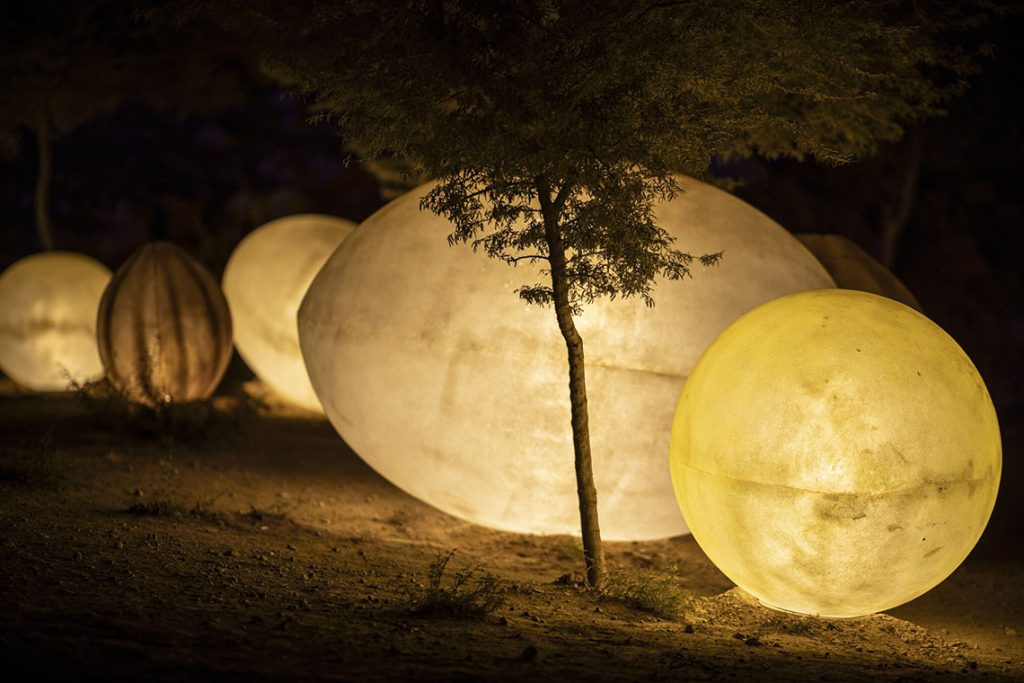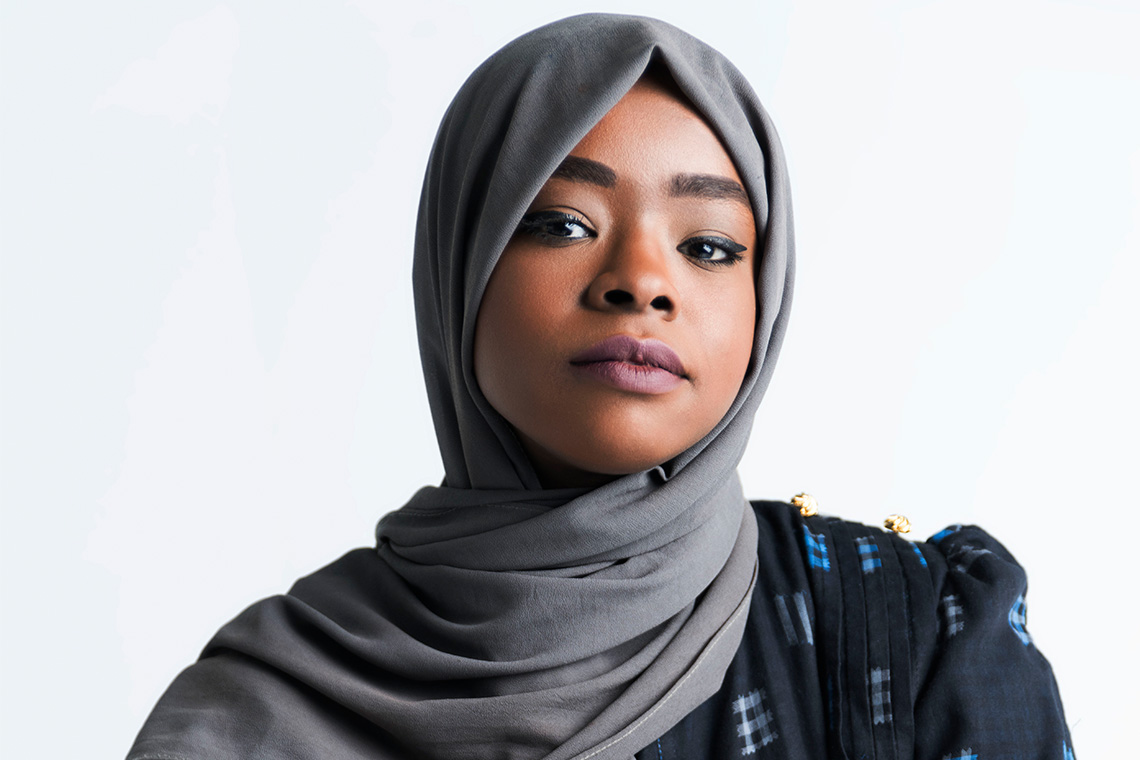The artist discusses her interest in connecting cultures and the fruitfulness of change and patience.
Canvas: We first met in 2021 at the Misk Art Residency showcase in Riyadh. How has your work evolved since then?
Bashaer Hawsawi: The residency actually still impacts my practice, even today! It created a lot of opportunities and allowed me to become a more mature artist and develop my practice and thinking. I recently resigned from my job so now I am focusing full time on art and learning.
Are there experiences from your life that have been an influence in your work?
In my work Qanfager (2021), I use papyrus because my practice often focuses on nostalgia. I want to document everything I witness, so I began using this type of paper because of how it has served memories in the past. In Egypt, they would use it to document things that they wanted to be remembered forever or passed on to future generations.

Your work Cleansing (2022) also has a personal dimension to it.
Yes, I talk about the stories from my family, especially to do with the Hajj and Makkah – where people come from all over the world to worship, cleanse their soul and then return home afterwards. I love these stories and I’m very interested in cultures, from all over the world, and how they connect to each other.
The materials that I use in my artwork come from my immediate environment. In Cleansing, for example, the broom was in my home. But also, you see cleaners in the street, around Jeddah, and they all use this specific type of red broom. This idea of cleaning and cleaning, this repetition, is everywhere. It gives a sense of the culture of the people and of the city itself, a feeling of a certain place and time, and the meaning behind cleaning in different ways, including in terms of cleansing the soul. I started this work as my own personal journey because I want to change and I want to clean myself from inside and clean my mind from everything that I don’t want.
I connect and collect data from my environment and then put it into my artwork. Right now, I am researching routines in my own family, and from different families around the world and across cultures. Each country has its own practices. This is particularly relevant to Jeddah, because people have come there from all over the world.
Were there any particular events in your life that have influenced how you manipulate materials?
In my last exhibition participation at Hayy Jameel, The Mountains Quiver in Anticipation (ends 29 April), the curator, Rotana Shaker, said: “You love playing with your work, like a child playing with things, you build it up and then you take it down.” I didn’t know why I was doing this, but later realised it was reflective of my environment and my home. My father used to have a store where he bought and collected things, and then sold them. I would wake up in the morning and see a car in the middle of our home, and then hours later it would be gone. My home was a place for materials to transform, so as a child there was always this curiosity and constant state of play.

The commissioned work The Magic of Memory (2022) at Hayy Jameel felt different. There was a lot of tension in the pieces.
Everything in my life has changed recently, which is reflected in my artwork and materials.I spent my childhood in Mecca, but the majority of my life was spent in Jeddah. I recently moved city because my home there was demolished and so we moved about an hour away. I had lived most of my life in Jeddah, so it was a big change, especially with all the travelling back and forth for work every day… So in the work, you see the stones balancing between each other. They reflect how I felt unstable but still connected, as I am trying to find a path – either I will fall or I will stay. There is also a piece in the work arranged in a circle, because I am imagining the home that was demolished as a funeral – I divided each part of the artwork into different situations that I have lived through.
For this work, I used stone taken from my home before we moved with stone that I bought myself. The mix is almost half-half in total, and I shaped the stones based on how I felt. But I’ve learned that change can be good. When I’ve had to move from place to place, I’ve become tougher, more resilient and I can handle more than before. Every change gives you a new experience.
Your work, Early Ripening, at Noor Riyadh 2022 draws upon inspiration from your mother as well?
My mother would dry and use lemons and other fruits in different ways, including as medicine. This specific work is about pickled lemons, and the impact of the light or sun on the fruit. My mother would take a lemon, cut it in half, fill it with salt, close it up again and keep it in the sun for three weeks, after which you could eat it. That’s why I made these lemons, with the various colours mirroring the different stages. It’s all about growth and process. Right now, we’re in a time when we want to rush everything, we want to succeed quickly, learn fast and have money instantly. But life doesn’t work like that. We need to give things time. These lemons take time to grow, prepare and then be ready to eat. We can’t rush the process.
This interview first appeared in Canvas 107: Art Nomads: The Journey of Ideas



